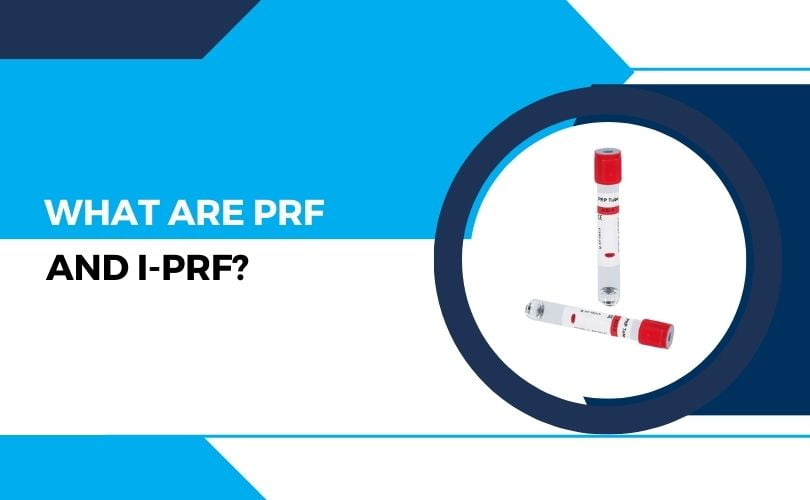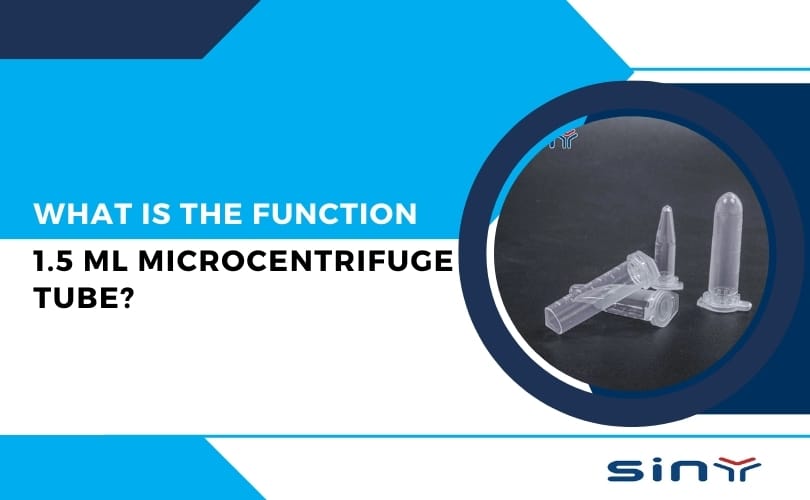PRF and I-PRF are two advanced medical treatments derived from blood, gaining significant attention in recent years. Medical professionals use these innovative therapies in various fields, including dentistry, orthopedics, and cosmetic surgery, for their regenerative and healing properties. Understanding the differences, applications, and benefits of PRF and I-PRF is crucial for medical professionals and patients alike.
Table of Contents
What is PRF?
PRF tubes emphasize fibrin, which binds platelets to growth factors in the form of chemical bonds and prolongs the action time of growth factors through slow release. Fibrin aggregates form a protein network that distributes platelets and leukocytes throughout. This product contains a large number of leukocytes that may have a high immunological value.
As a gel, doctors commonly use it in stomatology, maxillofacial surgery, orthopedics, plastic surgery, and other fields to remove wrinkles, treat discoloration spots, fill scars, and address hair loss.

What is I-PRF?
I-PRF, also known as ‘injectable PRF tubes, earns its moniker due to its thinner consistency of non-coagulable products. This form is injectable since it remains as a liquid rather than clotting or becoming sticky. Its versatility extends to various applications, including injection into regions requiring bone grafts, previously infected areas, sites of dental implant surgery, and infected root canals. Injectable improves the success rate of metal-free zirconia implants by pre-preparing the implant surface.
I-PRF has good cell viability, biocompatibility, and excellent tissue regeneration capacity. This advanced form of platelet-rich plasma does not use anticoagulants or other chemical additives, thus providing a completely natural treatment to improve volume loss, photodamage, fine lines and wrinkles, scars, pigmentation, poor texture, and hair loss
| Tube size & Tube material | Draw Volume(mm) | Additive | Color |
| 16*100mm/PET 16*100mm/Glass 16*100mm/Crytal 16*120mm/PET 16*120mm/Glass 1 6*120mm/Crytal | 8-15ml | Sodium Citrate | |
| Gel & Sodium Citrate | |||
| HA & Sodium Citrate & Gel | |||
| ACD-A | |||
| ACD- B | |||
| ACD – Gel | |||
| ACD, Gel & Biotin | |||
| Sodium Citrate, Gel & Biotin | |||
| Biotin | |||
| Calcium Chloride | |||
| PRF | |||
| Note: Special specifications and cap colors can be customized. | |||
Applications of PRF in Medicine
PRF tube has a wide range of applications in various medical fields thanks to its ability to promote natural healing and tissue regeneration. Some of the most common uses include dentistry, orthopedics, and dermatology.
| Product Name | PRF Tube |
| Tube Material | PET/Glass/Crystal |
| OEM/ODM | Yes |
| Certificate | CE, ISO13485, ISO9001 |
| Usage | Skin Treatment, Hair Treatment, Knee Treatment, Dental, Orthopedic |
| Sterile | Irradiation sterilization |
| Sample | Free |
| Service | The groups we serve: are distributors, import traders, government procurement, Buying Agents, and medical chain stores, we provide one-stop procurement for you to simplify your procurement process |

PRF in Dentistry
In dentistry, PRF is often used to enhance the healing of soft and hard tissues following dental procedures such as extractions, implant placements, and periodontal surgeries. By applying it to the surgical site, dentists can improve wound healing, reduce inflammation, and decrease the risk of infection.
PRF in Orthopedics
Orthopedic surgeons use to accelerate the healing of bone and soft tissue injuries. PRF can be applied to fractures, tendon repairs, and joint surgeries to promote faster recovery and reduce the risk of complications. The growth factors released help stimulate bone formation and tissue regeneration, leading to improved patient outcomes.
PRF in Dermatology
In dermatology, PRF’s utilized for various cosmetic and therapeutic purposes, including skin rejuvenation, scar treatment, and wound healing. The application of PRFs to the skin can enhance collagen production, improve skin texture, and reduce the appearance of fine lines and wrinkles. Additionally, Can be used to treat chronic wounds and ulcers, promoting faster and more effective healing.
Advantages of PRF’s
This offers several advantages over traditional healing methods and other platelet concentrates, making it an attractive option for both patients and healthcare providers.
Natural Healing Process
One of PRF’s primary advantages is that it harnesses the body’s natural healing process. Because PRF’s derived from the patient’s blood, it is biocompatible and pose no risk of allergic reactions or rejection. This natural approach to healing helps improve patient outcomes and reduces the need for synthetic or foreign materials.
Reduced Risk of Infection
PRF’s ability to promote tissue regeneration and reduce inflammation also helps lower the risk of infection at the treatment site. The presence of leukocytes within the matrix provides an additional layer of immune protection, further enhancing the body’s ability to fight off infections and heal more effectively.
Applications of I-PRF in Medicine
I-PRF’s have found applications in various medical fields, particularly in aesthetic medicine and hair restoration. Its ability to be injected directly into target tissues makes it an ideal choice for these types of treatments.

I-PRF in Aesthetic Medicine
In aesthetic medicine, it is used for skin rejuvenation, wrinkle reduction, and scar treatment. The injection into the skin promotes collagen production and improves skin texture, leading to a more youthful and radiant appearance.
Doctors can use it to treat acne scars and other skin imperfections, providing patients seeking cosmetic enhancements with a natural and effective solution.
I-PRF in Hair Restoration
I-PRF has also shown promise in hair restoration. By injecting I-PRF into the scalp, clinicians can stimulate hair follicles, promote hair growth, and improve the overall health of the hair. This treatment is particularly beneficial for patients experiencing hair thinning or early-stage hair loss, offering a natural and minimally invasive option for hair restoration.
Benefits of I-PRF
I-PRF offers several benefits over traditional and other regenerative therapies, making it a valuable tool in modern medicine.
Differences Between PRF and I-PRF
While share many similarities, they also have key differences that make them suitable for different applications.
Consistency and Form
The most notable difference between PRF and I-PRF is their consistency. PRF is a semi-solid fibrin matrix, while I-PRF is a liquid formulation. This form difference enables direct tissue injection of I-PRF, offering a more versatile and targeted treatment approach.
Application Techniques
Typically, clinicians apply as a clot or membrane to surgical sites, while they inject PRP into target tissues. This difference in application methods allows for a broader range of treatments and enhances the overall utility of regenerative medicine.
Final Thoughts
PRF and I-PRF represent significant advancements in regenerative medicine, offering natural and effective solutions for tissue healing and regeneration. Their unique compositions and mechanisms of action make them valuable tools in various medical fields, from dentistry and orthopedics to dermatology and aesthetic medicine. As research continues to advance, the potential applications will likely expand, further cementing their role in modern medical treatments.
FAQs
What is the main difference between PRF and I-PRF?
This forms a semi-solid fibrin matrix, whereas comes as a liquid formulation, allowing for direct injection into tissues.
How is PRF prepared?
To prepare PRF, draw the patient’s blood, centrifuge it to separate the platelets and leukocytes, and form a fibrin clot.
What are the benefits of using PRF in dentistry?
PRF Tubes enhance healing, reduces inflammation, and lower the risk of infection in dental procedures.
Can I-PRF be used for hair restoration?
Yes, when injected into the scalp, it can stimulate hair follicles and promote hair growth.
Is PRF a natural treatment?
Yes, it is derived from the patient’s blood, making it natural and biocompatible.
What are the future research directions for PRF and I-PRF?
Future research may focus on optimizing preparation techniques, exploring new applications, and enhancing treatment efficacy.



























































